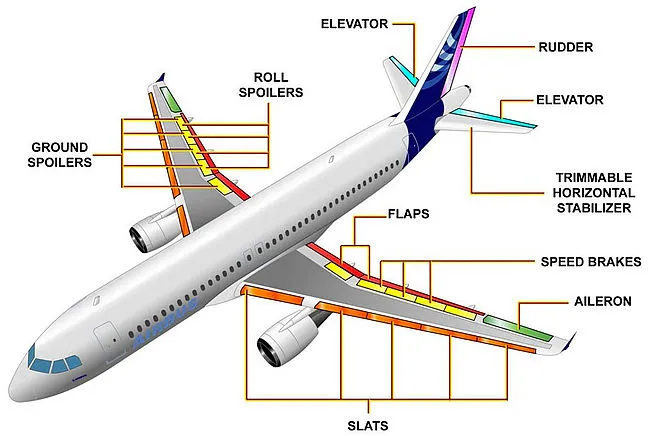I fly a decent amount. I’m not jet-setting around the world once a week, but I do board a plane more than a couple times a year, and my feelings toward flying and airplanes is best summed up as an uneasy affection. I’m fascinated with flight and all the advances we’ve made to put humans thousands of feet in the air, but every time I board a plane I do so with the knowledge that humans and the things we make are fallible, and in the past our ambitions have outreached our capabilities.
 Ambition outreaching capabilities.
Ambition outreaching capabilities.
Flight isn’t perfect, and it likely never will be, and despite the statistics that say flying is one of, if not the safest way to travel, I can’t help thinking, ‘Yes, but we are still 35,000 feet in the air, and a mechanical failure on a car, or an error made by a driver doesn’t tend to cause the death of hundreds of people in one go.’ Likewise, if something does go terribly wrong in a car, and say, you hit a guard rail and flip over a couple times and land upside-down in a ditch, the chances that you will survive that sort of accident are, in my mind, much higher than if the same thing happens in a plane. What I’m saying is, I tend to view whipping through the air on wings filled with several hundred pounds of highly explosive jet fuel with some healthy suspicion. On average, small dogs bite people way more often than larger dogs, but it only takes one nasty bite from a larger breed to seriously affect someone’s quality of life.
Totally the same thing.
That said, call me crazy, but I still do love flying. The very mechanics, the years of engineering, skill and passion that goes and has gone into making and operating aircraft delights me. Think of it: the average weight of an empty Boeing 747 is about 400,000 pounds. That’s 200 tons of airplane flying with relative ease at heights that are difficult to imagine on one’s own. The fact that that much weight can even get off the ground is miraculous. Airplanes do so with such a complicated arrangement of parts that I couldn’t even begin to explain with any detailed comprehension how it happens. My knowledge is one step above ‘it’s magic’ and several below knowing the difference between a flap, an aileron, and an elevator.
 Words I somehow know, but don’t understand.
Words I somehow know, but don’t understand.
When I’m in a jet, taxiing to the runway, I’m made acutely aware of all the tiny yet essential things that make flight possible. Each part of the plane and its crew must work together harmoniously to ensure a safe takeoff and landing. Any chink in the armor or series of errors can put that in jeopardy. During takeoff my first and only thought, consistently is, Humans were never meant to do this. We’re not meant to be in the air. This is freaking incredible! Oddly enough, I rarely think about the dangers in those moments.
Except when something brings it to my attention.
Like the time my flight from SFO to YVR hit its rear end on the runway during take off. Tailstrikes, as they’re known, are common enough to have a name, but don’t usually pose significant, immediate threat to an aircraft. They happen when a plane takes off or lands at too steep of an angle. I didn’t know what was happening at the time. I heard a huge thud just after we started angling up. I thought some luggage that hadn’t been secured properly had been thrown into the back of the plane. It wasn’t until later that I’d realized the plane itself had hit something.
Fortunately that’s the most danger I’ve ever been in while inside an airplane. That I know of. Who’s to say that one of those twenty minute long instances of turbulence wasn’t wind, but something else going wrong with the plane? Certainly the cabin crew isn’t going to mention something’s wrong until it becomes an honest to god emergency.

Nerves of steel, secured by a fashionable ascot.
In general, I trust airplanes and their various operators, in part because I have no choice. I have to fly to get where I need to go, and when I’m in an airplane my life and subsequently my faith is one hundred percent in the hands of the pilots and the structure and performance of the craft. It doesn’t do me any good to doubt. I don’t have any control in that situation. I must trust that everything is being handled capably, and I trust so hard in airplanes and their crews that if faith alone could fly a plane I could bring us to the Moon and back.
But every once in a while something happens that rattles that trust. Last year, unfortunately, was a particularly devastating year in recent aviation history. The disappearance of Malaysia flight 370, the destruction of Malaysia flight 17, and finally the crash of AirAsia flight 8501 reminded me, and probably many others that even today things can go tragically wrong. The AirAsia flight in particular hit me hard. Perhaps because I was in Canada at the time, due to fly again in less than two weeks. Perhaps because I take low cost airlines on vacations, and the AirAsia incident highlighted some of the real safety concerns of these flights based out of Asia.
I have a bit of a morbid fascination with plane crashes which I blame on my overactive imagination and my terrible fear of being a part of one. Since the plane’s disappearance, I’ve followed the story and the developments in its recovery daily. I don’t know why. I’m not personally invested in the crash, it doesn’t make me safer to know the details. It’s not going to change my decision to fly in the future. It’s a compulsion I think, tied in with equal parts fear, curiosity, and respect. I want to know why it happened, why so many people lost their lives, and remember that everyone of us has limits.
We’ve come a very long way since 1903, and every accident, incident and fatality since then has made flight safer for the people who have come afterward. I love flying and I’m terrified of it. Airplanes and all their miraculous parts and configurations that produce flight are marvels to watch and ride in. Engineers, pilots, air traffic controllers, maintenance personnel and more all have fantastically stressful jobs with enormous responsibility on their shoulders. When I disembark from an airplane, I wish it were possible to thank more people than just the cabin crew for a successful flight. Certainly, my continued love of airplanes and flight are because of the work of many dedicated people.
Thank you, to all of them.

